videos + essays
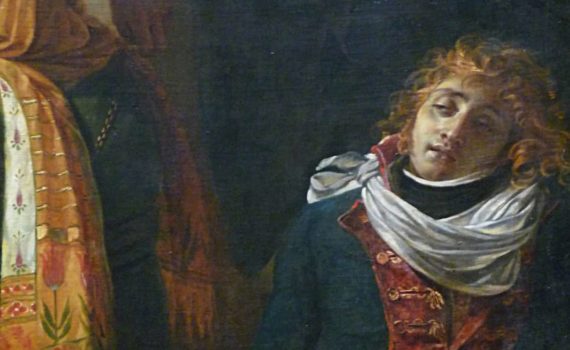
Baron Antoine-Jean Gros, Napoleon Bonaparte Visiting the Pest House in Jaffa
Napoleon masterfully manipulated his image, and this painting meant for Parisian audiences is pure propaganda.
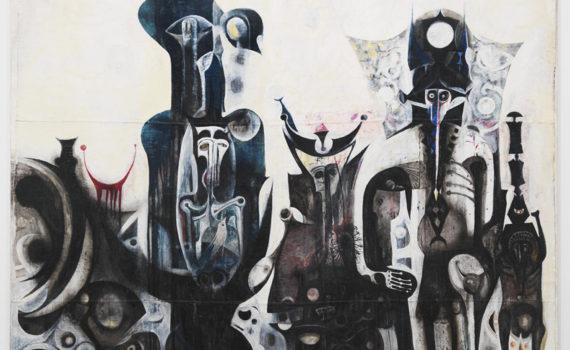
Ibrahim El-Salahi, Reborn Sounds of Childhood Dreams
How would you paint a picture of something that’s not quite representable… like the sound of voices chanting, a spiritual vision, a childhood memory, or a dream that you can’t remember?
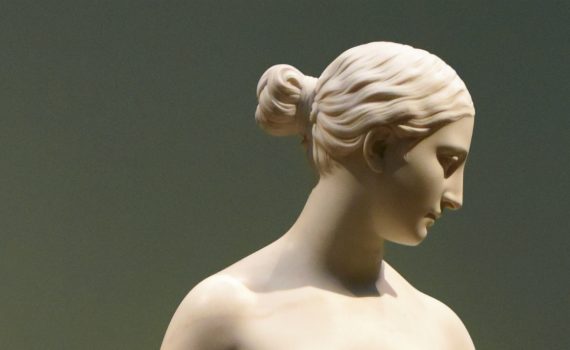
Hiram Powers, The Greek Slave
Though at first glance this nude seems plucked from classical antiquity, it actually alludes to modern politics.
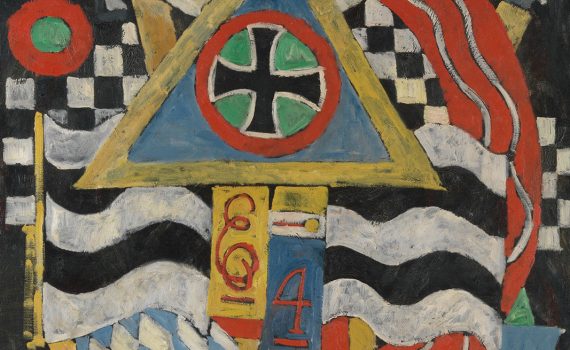
Marsden Hartley, Portrait of a German Officer
Does a portrait need to be an accurate visual representation of the subject?
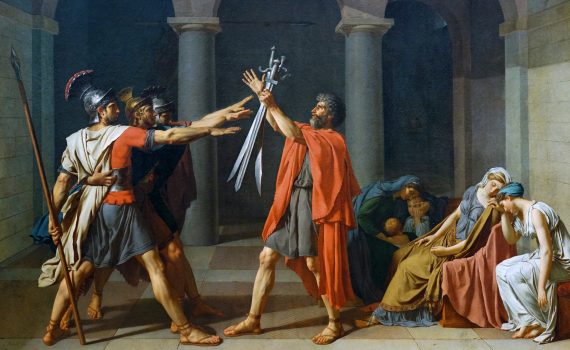
Jacques-Louis David, Oath of the Horatii
In style and story, this rigorously organized canvas looked back to antiquity; it soon became an icon of Revolution.
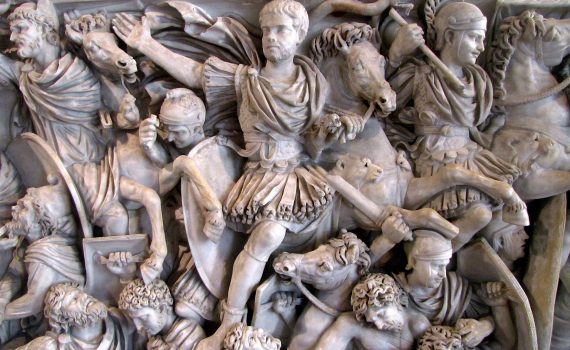
Battle of the Romans and Barbarians (Ludovisi Battle Sarcophagus)
Romans fight barbarians on this chaotic coffin, which shows signs of a turn in artistic trends.
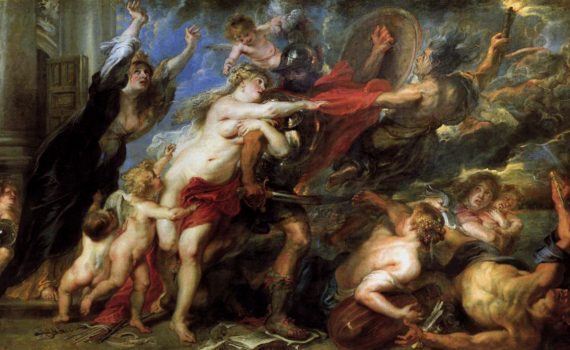
Peter Paul Rubens, The Consequences of War
This energetic painting captures the horror of war, from its overwhelming hopelessness to its cultural costs.
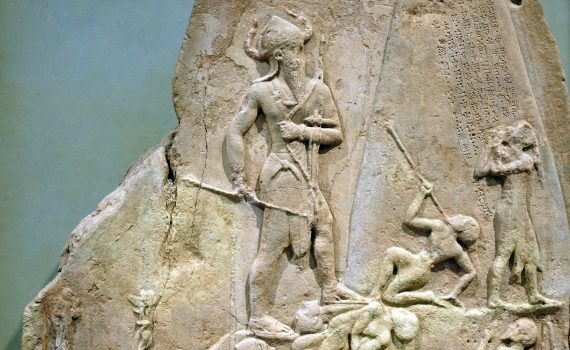
Victory Stele of Naram-Sin
Naram-Sin leads his victorious army up a mountain, as vanquished Lullubi people fall before him.
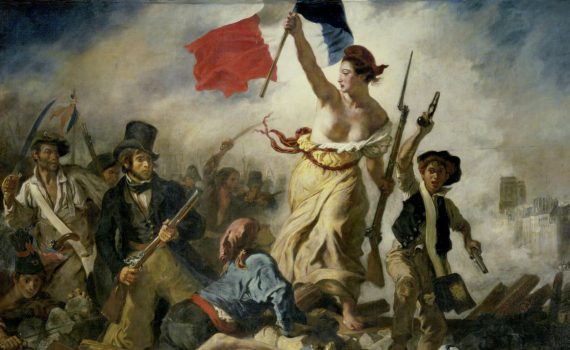
Eugène Delacroix, Liberty Leading the People
Bare-breasted with a bayonet? Liberty leads a revolution that won’t be televised but will be seen in the Paris Salon.
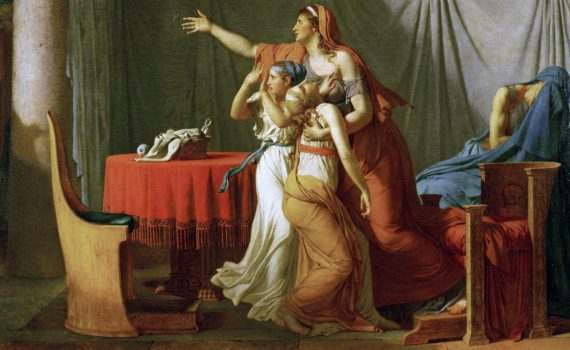
David, The Lictors Returning to Brutus the Bodies of His Sons
The stark space of this painting echoes the stoicism of its narrative—and reflects David’s research into antiquity.
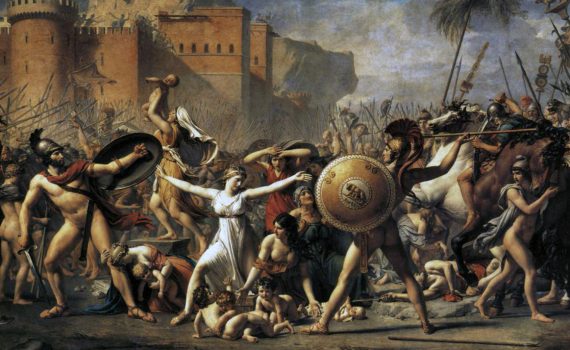
Jacques-Louis David, The Intervention of the Sabine Women
Think of the children! In contrast to David’s earlier paintings, this scene extols the strength of women.
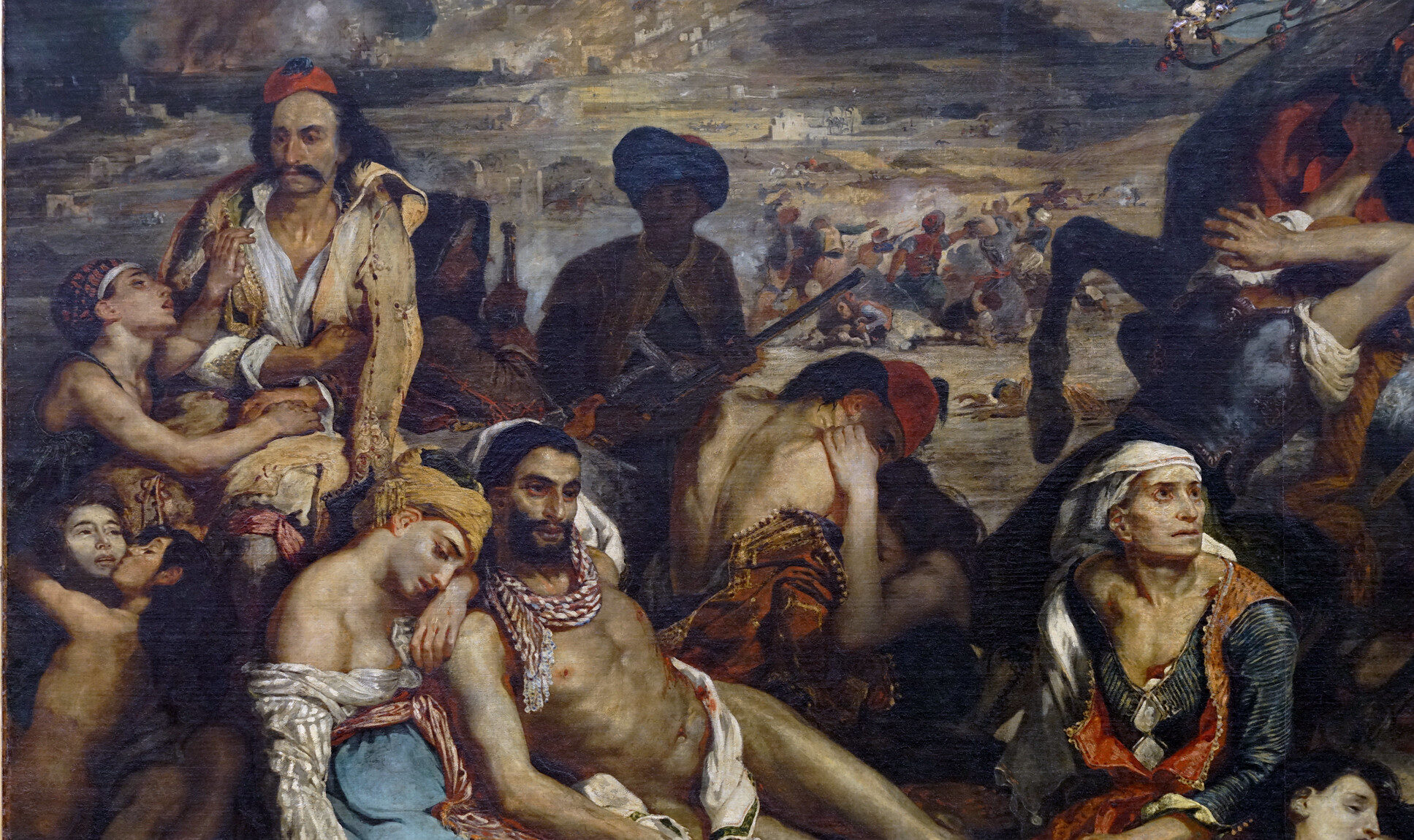
Eugène Delacroix, Scene of the Massacre at Chios
Delacroix’s scene of Greek survivors is anything but heroic and offers no relief to the suffering depicted.

